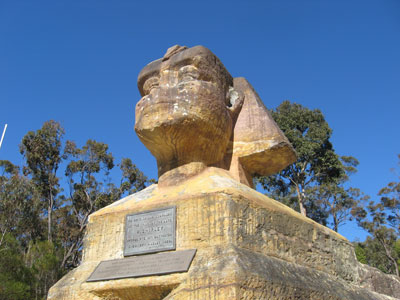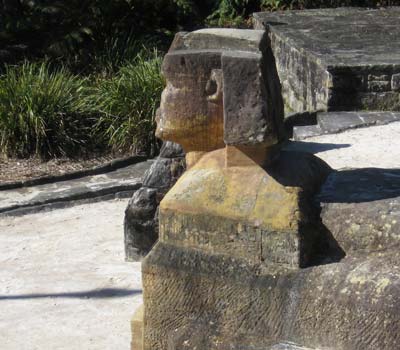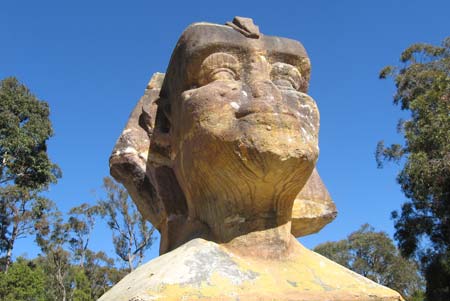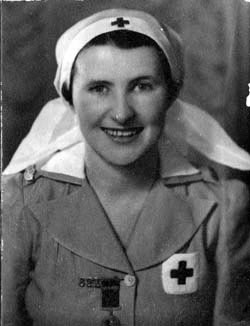REMEMBERING PRIVATE SHIRLEY
When I was a child, my family often used to go for picnics on a Sunday. After Sunday school, my father would have the car ready, my mother would have the sandwiches and drinks packed, and we would head off to some interesting part of Sydney. My brother and I always enjoyed these picnics.

Regular spots were mostly on the northern side of the harbour, including French's Forest, the beaches and bays. Sometimes we would go to favourite places like the picturesque Church Point, Bobbin Head and the charmingly named Coal and Candle Creek, in the Ku-ring-gai Chase National Park.
A year or so ago I remembered visiting a miniature sandstone sphinx and pyramids on some of these Sunday picnics. From memory I pictured them being somewhere away from the main road in a bushland setting. I also associated a feeling of solemnity with these visits. I did a bit of 'googling' and found that these unusually placed Egyptian replicas were in Ku-ring-gai Chase behind Lady Davidson Home. The stone works were crafted by a returned World War 1 soldier named Private William Thomas Shirley.

Private Shirley joined the Australian Imperial Force on 11 January 1916. He was 39 years old. Born in the Lake District in the north west of England, he was by trade, a stonemason and builder. Before coming to Australia he had completed a five year apprenticeship in Liverpool.
He enlisted at Casula, a south western suburb of Sydney. His enlistment papers record that his hair was grey, his complexion was dark, he weighed 60.8 kg (134 lb) and his height was 1m 68cm (5 ft 6 in). Before he sailed in May from Sydney on HMAT A46 Clan Mac Gillivray for overseas service, he was fined for being absent without leave at least three times.

He served as a private in the 13th Battalion in the trench warfare on the Western Front in France at Pozieres, in August and September. He would have experienced the heavy German shelling and seen many of his comrades killed and injured. On 11 April, 1917 his battalion was involved in the first battle of Bullecourt. Three days later he was evacuated to Rouen suffering debility.
On 25 April he was shipped to a hospital in London, where he developed pleurisy. In May his next of kin were advised by mail that he was in the Southwark Military Hospital suffering mild pleurisy. On 7 June he was transferred to the 2nd Australian Auxiliary Hospital in Southall still suffering from pleurisy. On his discharge from there on 26 June, he went absent without leave. Two days later he was fined two days’ pay and again admitted to hospital with pleurisy.

It was believed he had been suffering from this condition prior to his enlistment but it was acknowledged that his active service had accentuated it. After some bureaucratic indecision, on 1 August he was assessed as permanently unfit for both general and home service. He returned to Australia in October 1917 suffering senility and debility, spent more time in hospital and was discharged in November with a fortnightly pension of 15/-. In August 1922 he received the Victory medal, Star medal and British war medal.
 Shirley made his stone replicas during 1925 and 1926, while convalescing at Lady Davidson Home. The 4th Infantry Brigade, of which Shirley’s 13th Battalion was a sub-unit, had been based originally in Egypt. His sandstone sphinx and pyramids were to serve as a remembrance of those soldiers, his ‘glorious comrades’ of the Australian Imperial Force and all those who did not return from the battle fields.
Shirley made his stone replicas during 1925 and 1926, while convalescing at Lady Davidson Home. The 4th Infantry Brigade, of which Shirley’s 13th Battalion was a sub-unit, had been based originally in Egypt. His sandstone sphinx and pyramids were to serve as a remembrance of those soldiers, his ‘glorious comrades’ of the Australian Imperial Force and all those who did not return from the battle fields.
During World War 2 my mother had joined the Voluntary Aid Detachment, receiving first aid training from the St John Ambulance Association to work in hospitals and convalescent homes like Lady Davidson Home. Perhaps she had actually worked at this hospital during the war and this accounted for our visits to such a special place.
Recently I purchased a little book of poems entitled “Memories in Verse” by Percy Dixon. Unfortunately this little volume is undated but from an initial reading, I would guess that the 1930s or 1940s is not too wide of the mark. I was pleasantly surprised to come upon Dixon's poem Little Egypt, a simple, sincere homage to Private Shirley and his stone carvings.
“...Along a byway lonely,
I contemplate today.”
“Twas here that Private Shirley
Had carved immortal links
In rock, and parted early
From pyramids and sphinx.”
The poem suggests that Shirley's stone creations came at considerable cost to his health. During their construction, he was “growing weaker”. Sadly Private Shirley only survived another couple of years, dying on 27 August 1929. The poem also includes a poignant reference to Lady Davidson Home and its bushland setting.
“A Soldier's Home his dwelling
Sad legacy of war;
'Midst wild flow'rs ever telling,
How sweet life was before.”
[ posted on Friday, October 5th, 2007
Updated 23 October 2008 - © Jim Low ]

